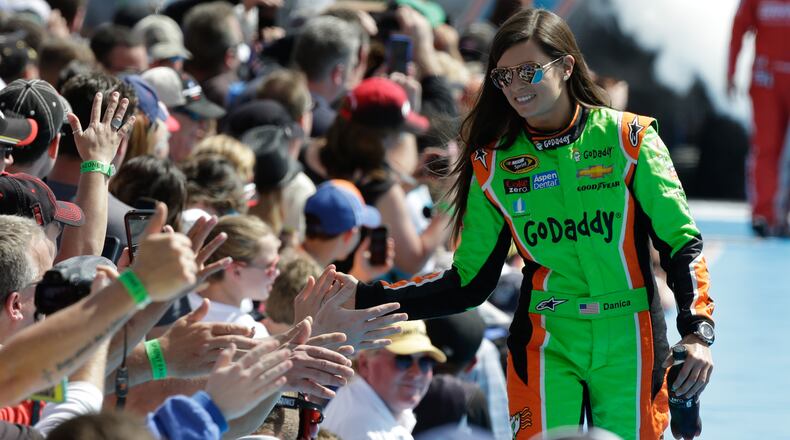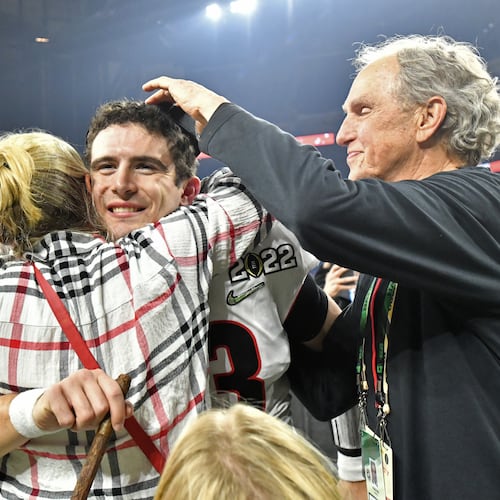The most famous female driver this side of drag-racing queen Shirley “Cha Cha” Muldowney will make her final run Sunday at the Indy 500.
One more time, Danica Patrick will give those who don’t exactly get the allure of the car fights – a majority, to be sure – a reason to glance at a race. If only to see where the woman stands.
Above all, Patrick was an object of curiosity at the track, one of those most rare kind of human stories capable of rising above the growling machinery. In a sport whose athletes are obscured by layers of fire-resistant clothing, cumbersome helmets and ultimately a sheet-metal shell, Patrick brought a personality that broke free of all that and demanded to be seen.
Hers is not a legacy to be measured by race victories, to be sure. But it is still a legacy to take note of – maybe even appreciated – here at the close of her contribution to the automotive arts.
Whether it was wise for Patrick to make the jump from open-wheel racing to NASCAR in 2012 can be debated forever. At least among those who might fault her for her unmitigated daring and ambition. It is indisputably fitting, though, that her final race is in one of these high-pitched rockets in a series where she had some quantifiable success.
An IndyCar winner – in Japan in 2008, becoming the first woman champion on that circuit – Patrick spent the six years of her NASCAR career in the middle of the pack. That ended on lap 101 in this year’s Daytona 500, caught up in a wreck that passed for a goodbye party.
Patrick ran 191 races on NASCAR’s premier circuit without once finishing in the top five. Her best finish was a sixth at Atlanta in 2014. Her best points finish was 24th in both 2015 and ’16. The average race finish for her career was 24th. She was a NASCAR star without resume.
Yet right to the end, when the economic pressures of a declining sport left her sponsorless, Patrick commanded the status of one of NASCAR’s elite. The notice she received was always disproportionate to the results she posted, if only because it was so rewarding to slip a feminine pronoun into a race story.
She played the game well, trading on her looks and her uniqueness to become a marketing sensation. Patrick has appeared in far more Super Bowls than her boyfriend, Green Bay quarterback Aaron Rodgers - her ads were once a staple of the game. Sure, there was a show-pony element to her career, but aren’t all drivers essentially walking billboards? Only Dale Jr. could beat her as a pitchman.
She was a polarizing figure, residing between those fans who continued to hold out hope of a race-day breakthrough and those who resented the spotlights she hijacked.
It remains that Patrick has the chops of a pioneer, as the first woman to race full-time in both Indy Car and NASCAR, the first to win in the open-wheel series and the first to ever lead laps at the Indy 500. More than enough to allow her to credibly carry a strong message into the future.
“I'm not shy about my message,” Patrick said last week. “I want to spread that message of empowerment and dreaming, setting big goals for yourself, and finding what it is that you love to do so you have the motivation to do it past when it's challenging.”
The next Danica – yes, she achieved first-name status in NASCAR despite never finishing first – has yet to be identified. There are no women competing at the Triple-A level of stock-car racing, the Xfinity series. One, Jennifer Jo Cobb, 44, races full time in the truck series.
Might she be 20-year-old Natalie Decker, who currently is fifth in ARCA drivers points? Or 16-year-old Hailie Deegan, running at the sport’s developmental level, the K&N Pro Series?
Patrick’s racing legacy may yet be defined by just how difficult she will be to replace.
About the Author
The Latest
Featured



